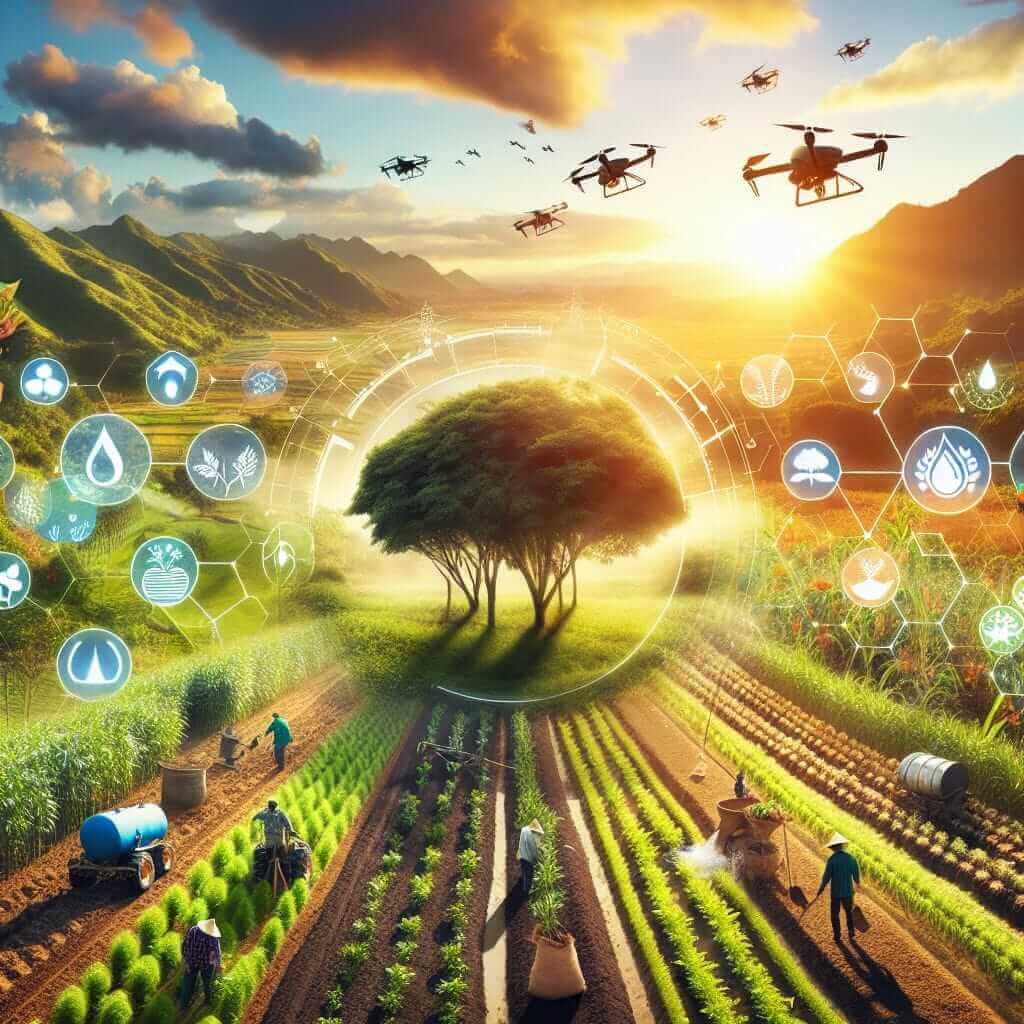One of the recurring themes in the IELTS Reading exam is “Methods for achieving sustainable agriculture in developing countries.” Given the global focus on sustainability and environmental preservation, this topic’s relevance continues to grow. Analyzing previous IELTS Reading tests, sustainable agriculture has been a prominent issue, reflecting its significance in both academic and practical realms. With the growing demand for sustainable practices, it’s likely we may encounter similar themes in future exams as well. This article will provide you with a complete reading practice, including questions and detailed answers, to help you prepare effectively.
Full Reading Text: Medium Text on Sustainable Agriculture
Methods for Achieving Sustainable Agriculture in Developing Countries
Sustainable agriculture is a vital approach for ensuring long-term food security and environmental health. Several methods have proven effective in achieving sustainable agriculture, especially in developing countries.
Firstly, integrated pest management (IPM) is a crucial method. IPM involves the use of biological, cultural, and physical methods to control pests while minimizing reliance on chemical pesticides. By promoting natural pest predators and rotating crops, IPM reduces the environmental and health risks associated with chemical use.
Secondly, agroforestry combines agriculture and forestry to create sustainable land-use systems. This method integrates trees and shrubs into crop and livestock systems, enhancing biodiversity, improving soil structure, and increasing resilience against climate change. Agroforestry can improve crop yields and provide additional sources of income through fruits, nuts, and timber.
Another essential method is organic farming, which avoids synthetic inputs and emphasizes natural processes. Organic farming improves soil fertility through composting and crop rotation, thus supporting biodiversity and reducing pollution. Developing countries can benefit immensely as organic produce often commands higher market prices, boosting farmers’ incomes.
Moreover, precision agriculture has gained traction. This technique uses advanced technologies such as GPS and IoT sensors to optimize field-level management regarding crop farming. Precision agriculture helps in efficient use of water, fertilizers, and pesticides, thereby lowering costs and environmental impact.
Finally, sustainable irrigation practices are critical. Drip irrigation and rainwater harvesting ensure efficient water use, crucial in areas prone to drought. These methods not only conserve water but also improve crop yields and soil health.
In conclusion, achieving sustainable agriculture in developing countries involves integrating various methods, from IPM and agroforestry to organic farming and precision agriculture. These practices collectively support the sustainable development goals by promoting food security, environmental health, and economic growth.

Questions
Multiple Choice
-
What is the main benefit of integrated pest management (IPM)?
A. Increases crop yields significantly
B. Minimizes the need for chemical pesticides
C. Enhances soil fertility
D. Provides additional sources of income -
Which of the following is NOT a component of agroforestry?
A. Integrating trees and shrubs into farming systems
B. Improving biodiversity
C. Using synthetic fertilizers
D. Increasing resilience against climate change
True/False/Not Given
-
Organic farming increases the use of synthetic inputs to improve soil fertility.
A. True
B. False
C. Not Given -
Precision agriculture helps in the efficient use of resources and reduces environmental impact.
A. True
B. False
C. Not Given
Matching Information
Match the following sustainable agriculture methods with their characteristics:
-
IPM
-
Agroforestry
-
Precision agriculture
-
Organic farming
A. Reduces reliance on chemical inputs through natural processes.
B. Uses advanced technology to improve efficiency in farming.
C. Combines agricultural and forestry practices.
D. Implements biological and cultural methods to manage pests.
Fill in the Blanks
- Sustainable irrigation practices such as __ and __ ensure efficient water use.
Short-Answer Questions
- What additional sources of income can agroforestry provide?
Answer Key and Explanations
Multiple Choice
-
B. Minimizes the need for chemical pesticides
Explanation: Integrated pest management (IPM) uses natural methods to control pests and reduces the use of chemical pesticides. -
C. Using synthetic fertilizers
Explanation: Agroforestry focuses on integrating trees and shrubs into farming systems, improving biodiversity, and increasing resilience to climate change, without relying on synthetic fertilizers.
True/False/Not Given
-
B. False
Explanation: Organic farming avoids synthetic inputs and improves soil fertility through natural methods like composting. -
A. True
Explanation: Precision agriculture uses advanced technology for efficient resource use and reduces environmental impact.
Matching Information
- D. Implements biological and cultural methods to manage pests.
- C. Combines agricultural and forestry practices.
- B. Uses advanced technology to improve efficiency in farming.
- A. Reduces reliance on chemical inputs through natural processes.
Fill in the Blanks
- Drip irrigation and rainwater harvesting
Explanation: These practices ensure efficient water use in sustainable agriculture.
Short-Answer Questions
- Fruits, nuts, and timber
Explanation: These are additional sources of income provided by agroforestry.
Common Mistakes
- Misinterpreting “Not Given” as “False”. “Not Given” means the information is not mentioned in the text, whereas “False” indicates that the statement contradicts the text.
- Overlooking keywords such as “minimizes” and “avoids” can lead to incorrect answers.
Vocabulary
- Integrated Pest Management (IPM): (noun) /ˈɪn.tɪ.ɡreɪ.tɪd pɛst ˈmæn.ɪdʒ.mənt/ The practice of using biological and cultural methods to control pests instead of chemical pesticides.
- Agroforestry: (noun) /ˈæɡ.roʊˌfɔr.ɪ.stri/ The practice of integrating trees and shrubs into agricultural environments.
- Organic Farming: (noun) /ɔːˈɡæn.ɪk ˈfɑː.mɪŋ/ A system of farming that avoids synthetic chemicals and relies on natural processes to enhance soil fertility.
- Precision Agriculture: (noun) /prɪˈsɪʒ.ən æɡrɪˈkʌltʃər/ The use of modern technology such as GPS and IoT sensors to optimize crop management.
Grammar Focus
- Relative Clauses: “IPM involves the use of biological methods that control pests.”
- Present Participle: “By promoting natural pest predators and rotating crops, IPM reduces the environmental risks.”
Advice for High IELTS Reading Scores
- Practice Skimming and Scanning: Read through texts quickly to get the gist and look for specific information.
- Understand Question Types: Familiarize yourself with various question forms, such as multiple-choice and matching headings.
- Time Management: Spend appropriate time on each section, ensuring you complete all questions.
By focusing on these strategies and practicing regularly, you can improve your reading skills and achieve a higher score in the IELTS Reading exam.